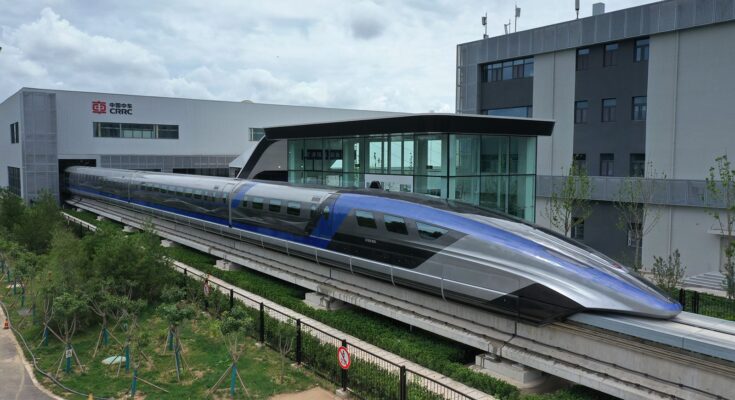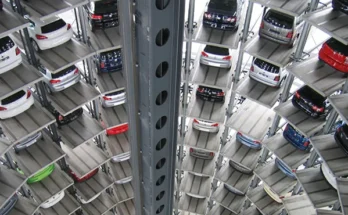In a stunning leap toward the future of transportation, China has unveiled a maglev train that just reached an astonishing 620 miles per hour (1,000 kilometers per hour)—making it faster than most commercial airplanes. This isn’t the plot of a sci-fi movie. It’s real, it’s here, and it’s a major step forward in how we’ll travel in the decades to come.

The feat was accomplished using magnetic levitation (maglev) technology, where trains float just above the tracks using powerful magnets. This eliminates direct physical contact, drastically reducing friction and allowing for previously unthinkable speeds. At 620 mph, this train is not just fast—it’s revolutionary.
How Maglev Works: Floating on Magnetic Fields

Maglev trains operate on a deceptively simple principle: like magnetic poles repel. By lining the track and the train’s base with superconducting magnets, engineers create a cushion of magnetic force that levitates the train a few centimeters above the guideway. This levitation removes almost all friction between train and track.
Propulsion is then handled by linear motors, which push the train forward using electromagnetic forces. The result is incredibly smooth, silent, and fast travel—free from the noise, vibration, and drag of traditional rail systems.

Faster Than a Jet, Smoother Than a Car
At 620 mph, this maglev prototype is faster than a Boeing 747 cruising at 560 mph. A trip from Beijing to Shanghai, a distance of over 800 miles, could be completed in just two hours—half the time of a commercial flight, and without airport hassles.
Beyond speed, maglev trains offer unmatched ride comfort. With no wheels, axles, or track contact, the journey is nearly silent, with minimal vibration and no rail clickety-clack. Passengers could read a book or sip coffee at 600+ mph without a spill.
China Leading the Maglev Revolution
While Japan’s Shinkansen and Germany’s Transrapid pioneered maglev research, China is now leading the race to bring ultra-high-speed maglev into commercial reality. The record-setting train was developed by CRRC (China Railway Rolling Stock Corporation) and tested in Qingdao, where engineers are refining both speed and safety systems.
China already operates a commercial maglev line in Shanghai, connecting the city center to Pudong International Airport at speeds up to 267 mph. But the 620 mph prototype signals ambitions far beyond airport shuttles. The vision is to create a nationwide maglev network that will redefine domestic travel—allowing trips between major cities in a fraction of today’s time.
Environmental and Economic Potential
Maglev technology doesn’t just deliver speed—it also offers environmental advantages. Powered by electricity, maglev systems produce zero direct emissions, making them cleaner than planes and diesel trains. If powered by renewable energy sources like solar or wind, maglev travel could become virtually carbon neutral.
Additionally, maglev trains require less maintenance due to their lack of moving parts and reduced wear and tear. That translates into long-term cost savings, lower operational risks, and improved reliability—crucial for high-frequency, intercity travel.
The Challenges Ahead
Of course, there are still hurdles. Infrastructure costs are high, requiring new tracks, tunnels, and stations built to maglev specifications. Integration with existing rail systems is complex, and international maglev standards are still evolving.
Despite these challenges, the momentum is undeniable. China’s maglev development reflects a national commitment to cutting-edge transportation and a bold vision for the future of mobility. With commercial rollout targeted for the next decade, the country is betting big that passengers will soon choose frictionless trains over short-haul flights.
The Future Is Frictionless
Imagine a future where city-to-city travel is as seamless as hopping on a subway—no traffic, no airport security lines, just near-silent, high-speed gliding above the rails. That’s the promise of maglev.
China’s 620 mph milestone isn’t just about breaking speed records—it’s about transforming how the world moves. It proves that the future of transportation doesn’t have to crawl—it can fly, without ever leaving the ground.



